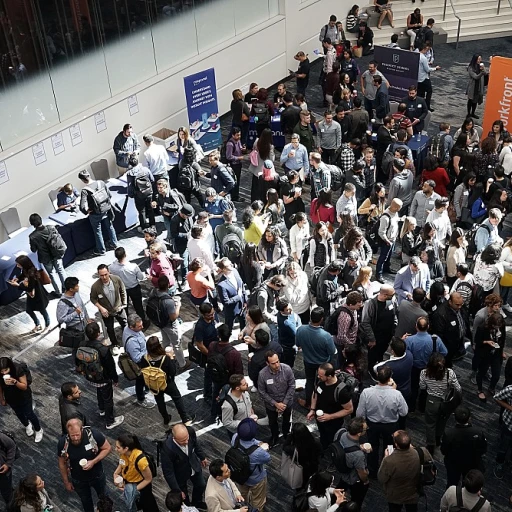
Understanding HRM Forecasting
The Importance of Forecasting in Human Resource Management
Understanding HRM forecasting is pivotal for Chief Human Resources Officers (CHROs) aiming to align workforce planning with the company's evolving business goals. Simply put, HRM forecasting involves predicting future human resource needs by analyzing current workforce data and business demand. It's more than just an abstract exercise; it's an essential strategy for maintaining a well-balanced workforce. One of the primary purposes of workforce forecasting is to ensure that the company has the right talent in place at the right time. By leveraging historical data and predictive analytics, CHROs can anticipate changes in workforce demand and supply, enabling them to plan effectively for future staffing needs. Forecasting helps address several crucial human resource questions, including:- What will be the company's future staffing needs?
- How can we efficiently manage talent acquisition to meet these demands?
- What gaps exist in our current workforce planning that need strategic intervention?
Key Components of Effective HRM Forecasting
Crucial Elements for Successful HRM Forecasting
In order to enhance the effectiveness of HRM forecasting, certain components must be considered as foundational elements. Understanding these key factors will significantly improve forecasting accuracy and align resource planning with business objectives.1. Historical Data Analysis: One cannot overstate the importance of historical data in demand forecasting. Analyzing past trends allows businesses to identify patterns in employee turnover, human resource needs, and workforce demands. By examining historical data, organizations can create more accurate workforce forecasts.
2. Predictive Analytics: Leveraging predictive analytics tools facilitates the anticipation of future workforce needs. These tools analyze current workforce metrics and future trends projection, enabling organizations to plan better and fulfill company goals.
3. Scenario Planning: Engaging in scenario planning helps in preparing for various future staffing scenarios. By predicting potential future events, gaps between supply and demand of talent are easily identified, allowing preemptive strategies to be put in place.
4. Gap Analysis: Conducting a gap analysis is an essential aspect of defining future staff requirements. Through gap analysis, HR departments can compare current capabilities with future business goals to determine where additional talent acquisition is necessary.
5. Workforce Planning and Forecasting Techniques: Developing tailored workforce planning and forecasting techniques is crucial in managing employee headcounts and ensuring alignment with business strategies. Techniques range from quantitative models to qualitative assessment methods.
6. Integration of Business Goals: Effective HRM forecasting directly ties into achieving overarching company objectives. Aligning resource planning with business strategies ensures that the workforce is effectively employed to support strategic initiatives.
For those interested in how these foundational elements are evolving, exploring emerging trends in CHRO careers provides insights into the dynamic changes reshaping human resources management. By staying informed, forecasting can be responsive to new trends, securing a workforce that aligns with future business demands.
Tools and Techniques for HRM Forecasting
Navigating the Toolbox of HRM Forecasting
An essential component of mastering HRM forecasting is utilizing a range of tools and techniques that enhance accuracy and effectiveness. In today's rapidly evolving business landscape, organizations must harness the power of data and analytics to predict future staffing needs and align them with business goals efficiently.
Key Tools for Effective Workforce Forecasting
- Predictive Analytics: Leveraging this technique can transform historical data into forecasts that inform strategic decisions. Predictive analytics helps organizations anticipate future staffing demands by analyzing trends, current workforce skills, and talent needs.
- Scenario Planning: This technique allows companies to prepare for various possible futures by considering different variables and their potential impact. By examining multiple scenarios, HR leaders can make informed decisions about talent acquisition and workforce management strategies.
- Trend Analysis: A method that involves evaluating workforce trends over time to understand fluctuations in demand and supply. This analysis aids in recognizing patterns that impact workforce planning.
- Gap Analysis: Useful for identifying discrepancies between current workforce capabilities and future staffing requirements. This analysis helps Human Resources departments pinpoint areas where additional talent or training resources may be needed to meet business objectives.
- Business Intelligence Software: Employing sophisticated software solutions that incorporate data analysis tools enhances forecasting capabilities. Such software can provide valuable insights into employee data, resource allocation, and human resource efficiency.
Integrating these tools and techniques into HRM forecasting strategies ensures organizations are well-prepared to meet future staffing and resource needs. By systematically applying these methodologies, companies are better equipped to enhance their workforce planning and align their human resources with their strategic goals effectively.
For insights on effectively navigating digital growth in this space, consider exploring digital marketing expertise and its impact on human resources management.
Challenges in HRM Forecasting
Confronting Common Obstacles in Workforce Forecasting
In the realm of workforce forecasting, several challenges can impede accurate predictions and effective human resource planning. Despite the availability of advanced data and predictive analytics, businesses encounter hurdles that stem from both internal and external factors.- Lack of Accurate Data: One of the primary hurdles is the absence of reliable and comprehensive historical data. For businesses, having access to past data is crucial for conducting trend analysis and making informed predictions about future demand and supply of employees. However, many organizations struggle with incomplete or unstructured datasets, which can skew workforce planning efforts.
- Rapid Market Changes: Businesses frequently face unstable market conditions, which can significantly affect demand forecasting. Companies must adapt their strategies quickly to meet sudden shifts in business goals, workforce needs, or economic downturns. This unpredictability complicates the planning of future staffing and resource allocation.
- Integrating Technology: While technology offers valuable tools for predictive analytics, the challenge lies in effectively integrating these tools with current workforce systems. Human resources departments may face resistance when adopting new technologies, especially when employees are unfamiliar with them. This can hinder efforts to engage in comprehensive scenario planning and utilize forecasting techniques effectively.
- Gap Analysis Complexity: Accurately forecasting human resources demand requires precise gap analysis to identify disparities between current workforce capabilities and future needs. Identifying skills deficits or talent acquisition needs demands detailed analysis, which requires collaboration across departments and alignment with business objectives.
- Human Factors: Workforce forecasting heavily involves human elements, such as talent retention and employee satisfaction. These factors play a critical role in ensuring a company can meet its future goals, yet are challenging to predict due to their subjective nature. Developing strategies to address these unpredictable human resource aspects require nuanced planning and foresight.
Case Studies: Successful HRM Forecasting
Real-World Examples of HRM Forecasting Success
In the realm of human resources, effective forecasting can be a game-changer for businesses aiming to align their workforce with future demands. Let's explore some real-world examples where companies have successfully implemented HRM forecasting strategies to meet their business goals.
Case Study 1: Tech Company Revolutionizes Talent Acquisition
A leading tech company faced challenges in predicting future staffing needs due to rapid growth and technological advancements. By leveraging predictive analytics and historical data, they were able to conduct a thorough gap analysis. This analysis helped them identify the skills their current workforce lacked and forecast future talent needs. As a result, they implemented a robust talent acquisition strategy that reduced time-to-hire by 30% and improved employee retention rates.
Case Study 2: Retail Giant Optimizes Workforce Planning
A major retail chain utilized workforce forecasting to address seasonal fluctuations in demand. By employing scenario planning and trend analysis, they could predict future staffing requirements with greater accuracy. This proactive approach allowed them to optimize their workforce planning, ensuring they had the right number of employees at the right time. Consequently, the company saw a significant reduction in overtime costs and an increase in customer satisfaction during peak seasons.
Case Study 3: Healthcare Provider Enhances Resource Allocation
In the healthcare sector, a prominent provider faced challenges in resource allocation due to unpredictable patient volumes. By implementing advanced forecasting techniques, they were able to better predict patient demand and align their human resources accordingly. This strategic approach not only improved patient care but also enhanced employee satisfaction by reducing burnout and ensuring a balanced workload.
These case studies illustrate how effective HRM forecasting can help companies anticipate and meet future workforce demands. By integrating data-driven strategies and aligning them with business goals, organizations can ensure they are well-prepared for the challenges of tomorrow.












